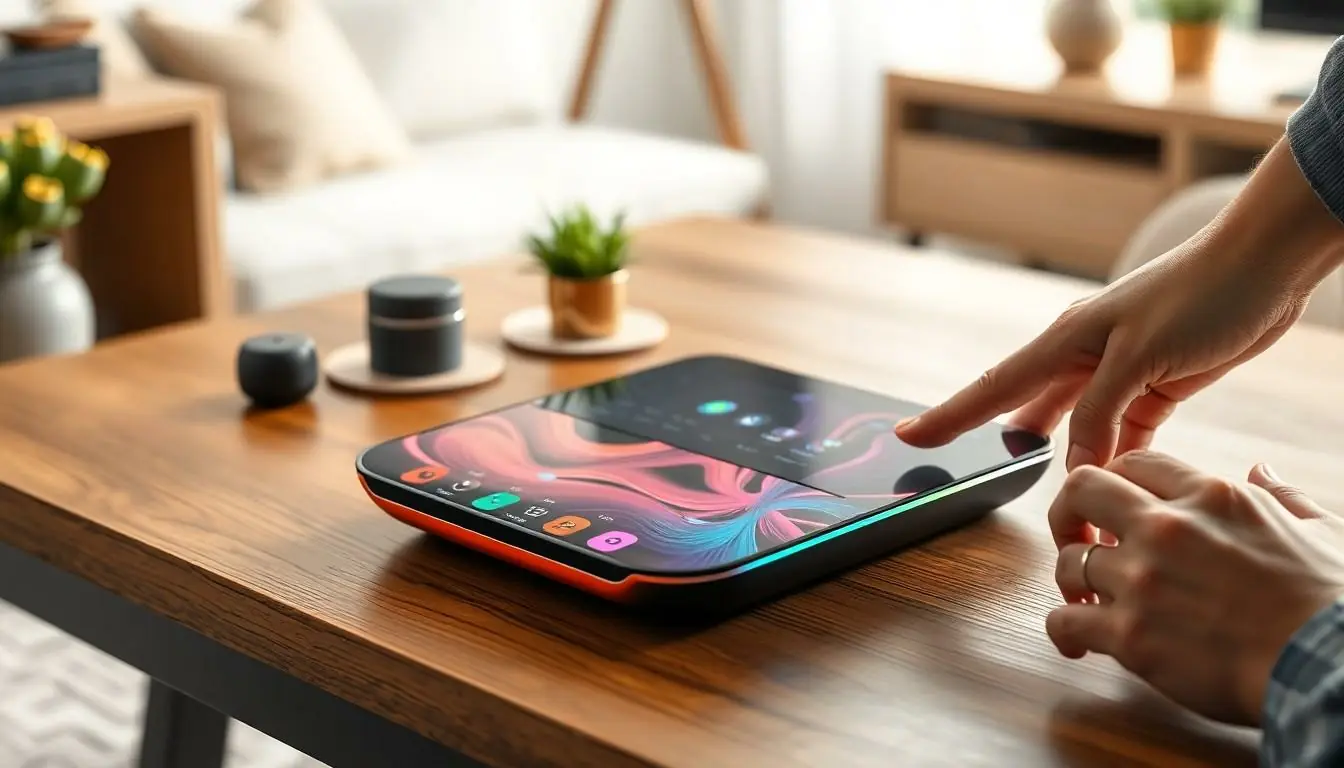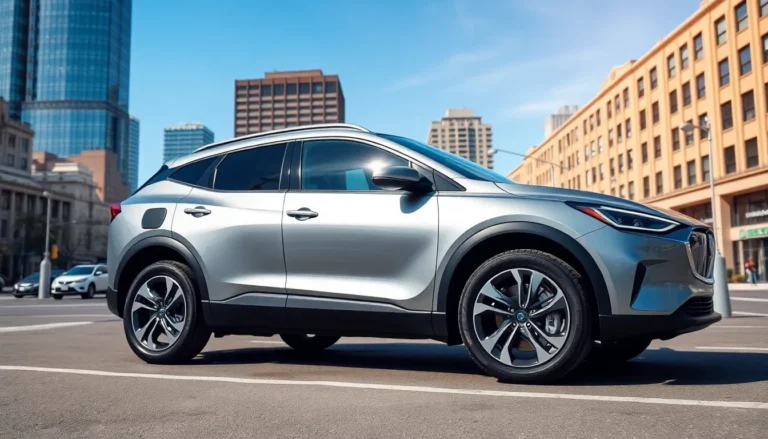In a world where gadgets reign supreme, consumer electronics design is the unsung hero behind the devices that make life easier and more entertaining. Imagine a universe without smartphones or smart TVs—it’s like a party with no cake! The magic lies in how designers blend functionality with aesthetics, turning everyday tools into eye-catching tech marvels.
But it’s not all smooth sailing; the journey from concept to creation is filled with challenges that would make even the most seasoned designer sweat. From user experience to sustainability, each decision shapes the final product. So, buckle up as we dive into the fascinating realm of consumer electronics design, where innovation meets creativity, and every pixel counts in making the tech world a little more delightful.
Table of Contents
ToggleOverview of Consumer Electronics Design
Consumer electronics design plays a vital role in creating gadgets that enhance daily life. Designers blend functionality and aesthetics to transform ordinary devices into attractive tech solutions.
Importance of Design in Consumer Electronics
Design significantly impacts user experience and product appeal. A well-considered design captures attention and fosters brand loyalty. Engineers, marketers, and designers collaborate closely, ensuring that devices meet user needs while being visually appealing. An engaging interface enhances usability, leading to more satisfied customers. Research indicates that consumers prioritize aesthetics, with 60% willing to pay more for designed products. Functionality supports a seamless experience, establishing trust in usage. Ultimately, effective design elevates electronics from mere tools to essential lifestyle components.
Trends in Consumer Electronics Design
Current trends in consumer electronics design focus on sustainability and minimalism. Eco-friendly materials gain traction as companies seek to reduce environmental impact. User-centered designs increasingly highlight usability, making features intuitive and accessible. Smart technology integration remains crucial, allowing devices to connect and interact seamlessly. Additionally, personal customization becomes popular, as users seek tailored experiences. Sleek, minimalist designs dominate the market, appealing to modern aesthetics and simplicity. Continuous innovation drives the sector, pushing designers to explore new functionalities and visual styles.
Key Components of Consumer Electronics Design

Consumer electronics design involves multiple elements that combine aesthetics and functionality. The following components play crucial roles in shaping effective and appealing devices.
Aesthetic Design Considerations
Aesthetic design significantly influences a product’s market appeal. Designers focus on color schemes, materials, and overall form to create eye-catching devices. Recent research shows that 70% of consumers value aesthetics, with many willing to invest up to 30% more for visually appealing products. Simplicity in design also enhances user attraction. Unique shapes and textures contribute to initial impressions and brand recognition. Additionally, sustainability drives many design choices, with eco-friendly materials becoming increasingly popular. Engaging designs capture attention, inviting customers to explore the product further.
Functional Design Elements
Functional design elements directly impact usability and performance. Layout, ergonomics, and interface play vital roles in the user’s experience. An intuitive button arrangement enhances ease of use, while comfortable grips improve handling. Recent studies indicate that 65% of users prioritize functionality over aesthetics in purchasing decisions. Incorporating smart technology also increases product intelligence, allowing devices to adapt to user preferences. Clear labeling and logical navigation streamline interactions, facilitating positive experiences. Overall, functional design ensures that devices not only look good but perform efficiently, meeting user needs effectively.
User Experience in Consumer Electronics Design
User experience stands at the core of consumer electronics design, bridging functionality and aesthetics. Designers prioritize usability to enhance the interaction users have with their devices.
Usability and Ergonomics
Usability remains a top priority in product design. Devices must facilitate ease of use, particularly for modern consumers. Ergonomics plays a vital role, ensuring comfort during prolonged use. Products designed with user comfort in mind encourage longer engagement. Studies show 65% of users value function over aesthetics when making purchase decisions. Streamlined interfaces contribute to intuitive navigation, which enhances overall user satisfaction. Products should also accommodate diverse user needs, promoting inclusivity and accessibility.
Impact of User Feedback
User feedback significantly shapes design iterations. Consumers provide insights that inform enhancements in both function and style. Incorporating real user experiences leads to products that resonate with the target audience. Designing based on feedback increases customer satisfaction and brand loyalty. Regularly gathering opinions allows designers to stay ahead of trends and consumer expectations. Focus groups and surveys play a critical role in this process. Companies that prioritize user input often report higher levels of success in product launches, as their offerings align with market demands.
Future of Consumer Electronics Design
Consumer electronics design continues to evolve rapidly, driven by innovation and changing consumer expectations.
Emerging Technologies
Artificial intelligence drives significant advancements in consumer electronics. Smart assistants enhance user interaction by understanding voice commands and personalizing experiences. Augmented reality expands product functionality, giving users immersive experiences, particularly in gaming and training applications. Flexible displays offer new possibilities for device portability and form factor, allowing for unique and innovative shapes. The Internet of Things connects various devices, ensuring seamless communication and control, thus reshaping daily life. Designers increasingly integrate biometric sensors in devices for enhanced security and user experience. Expectedly, these emerging technologies transform the way consumers interact with electronics, emphasizing functionality while maintaining aesthetic appeal.
Sustainability in Design
Sustainability remains a crucial focus in consumer electronics design. Eco-friendly materials are becoming standard, addressing environmental concerns and consumer preferences. Designers prioritize energy efficiency, leading to lower energy consumption in devices, which benefits both users and the planet. Recyclable packaging reduces waste and promotes responsible disposal practices among consumers. Life-cycle assessments help manufacturers evaluate the environmental impact of products, influencing design decisions. Engaging consumers in sustainable practices enhances brand loyalty, as a significant percentage express preference for eco-conscious brands. As sustainability takes center stage, innovative solutions continue to emerge, ensuring that the future of consumer electronics aligns with environmental responsibility.
Consumer electronics design plays an indispensable role in shaping the gadgets that enrich everyday life. The fusion of aesthetics and functionality not only captivates consumers but also fosters brand loyalty. As technology advances and consumer preferences shift, designers must remain agile and innovative.
The emphasis on sustainability and user-centered approaches is more crucial than ever. By prioritizing intuitive interfaces and ergonomic designs, companies can enhance user satisfaction while addressing environmental concerns.
The future of consumer electronics design looks promising as it embraces emerging technologies and trends. This dynamic field will continue to evolve, ensuring that devices not only meet functional needs but also resonate with consumers on a personal level.





